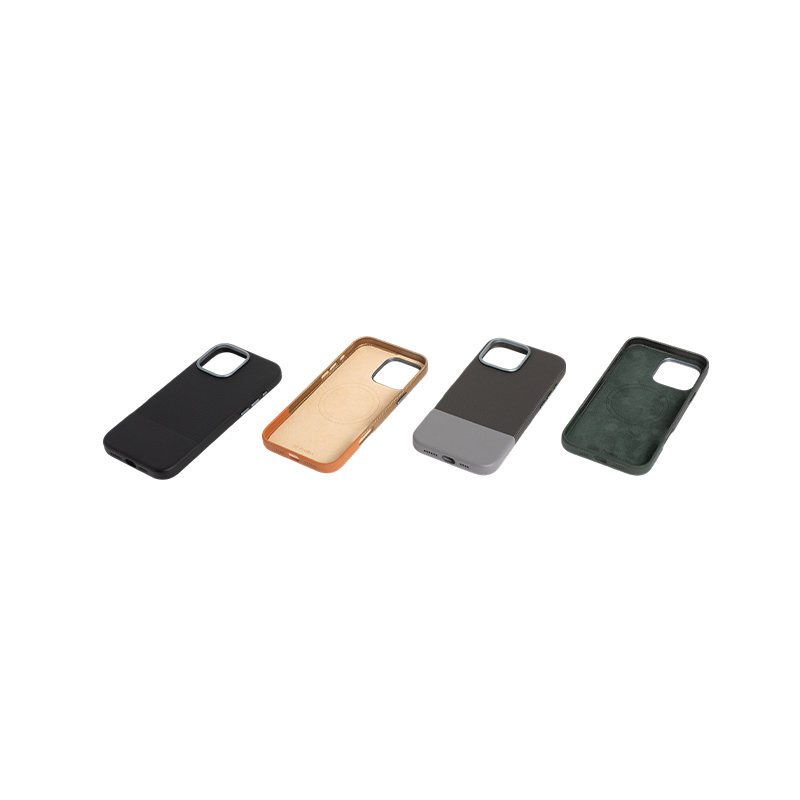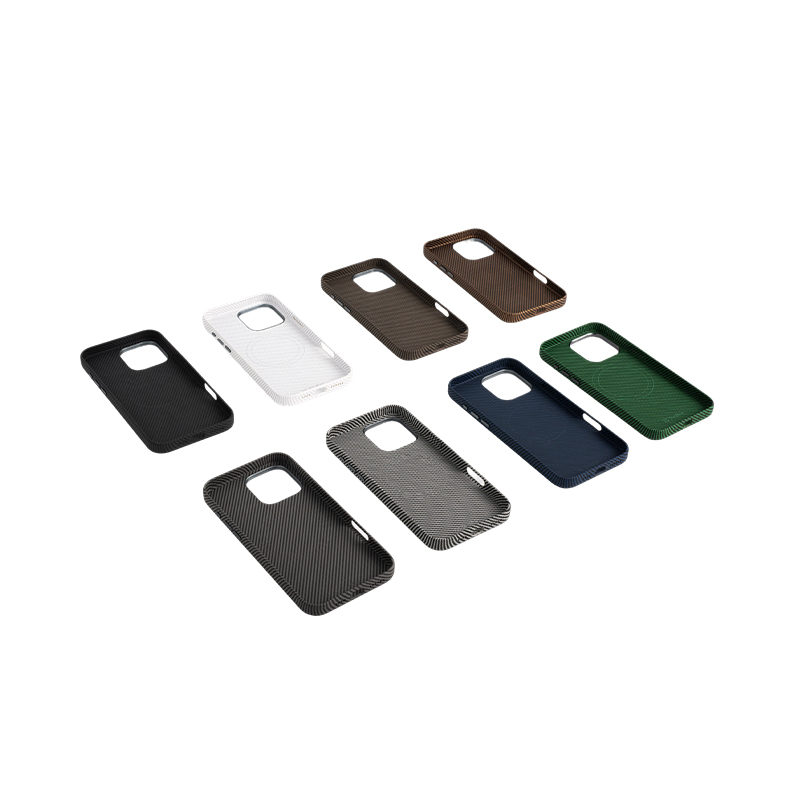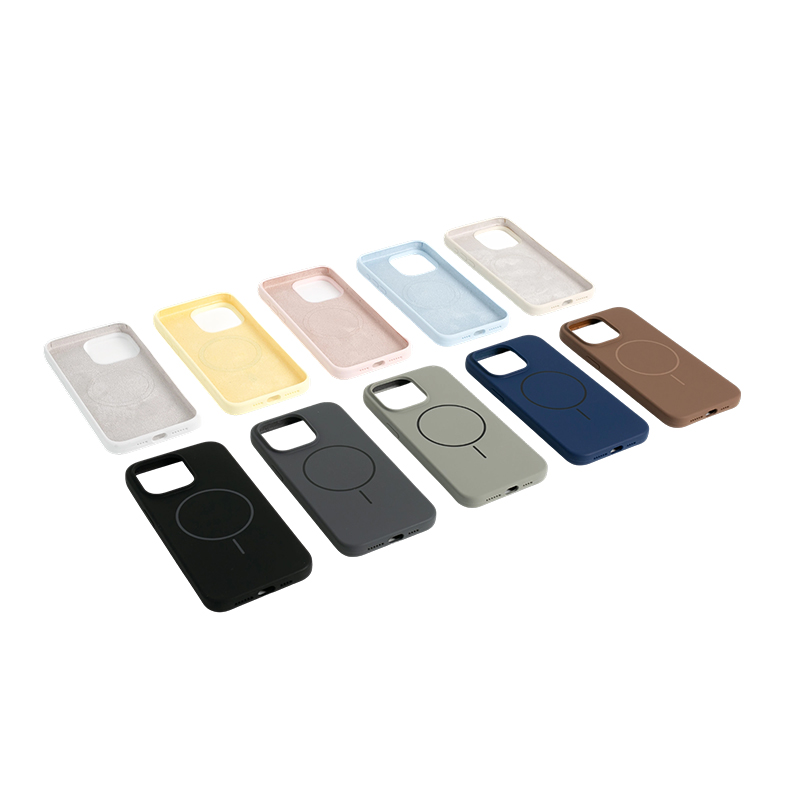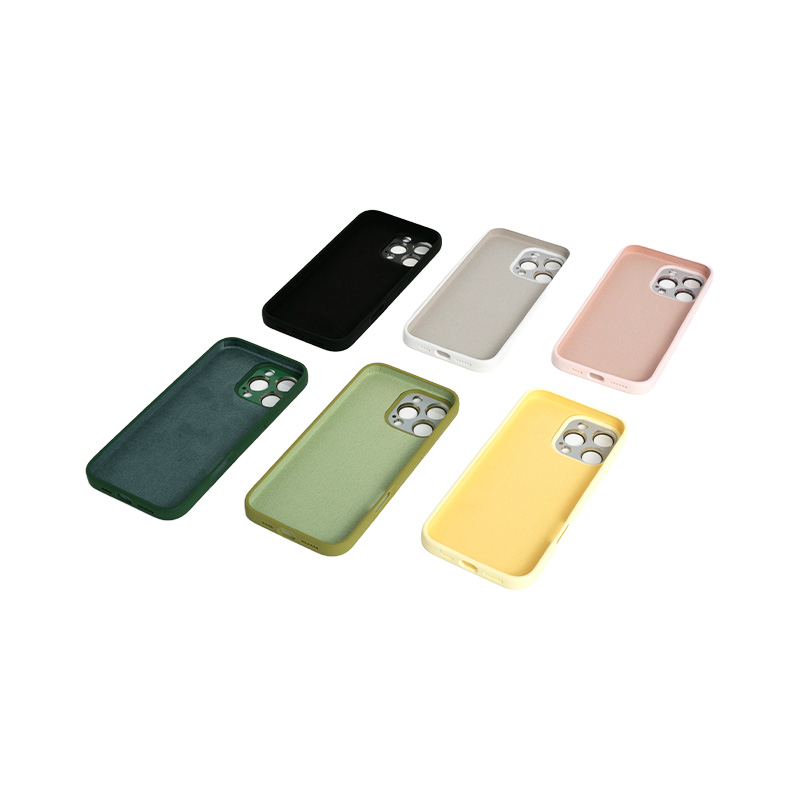How do Apple iPhone mobile phone cases address stuffiness and signal attenuation?
Release Time : 2025-10-03
Apple iPhone mobile phone cases address stuffiness and signal attenuation. As smartphones become increasingly powerful, high refresh rate screens, 5G communications, high-performance chipsets, and fast charging technologies deliver the ultimate user experience, but they also introduce new challenges: excessive heat and signal fluctuations. Improperly designed protective cases, as the phone's intimate companion, can exacerbate these issues: heavy materials hinder heat dissipation, metal components interfere with signals, and enclosed structures cause heat accumulation. However, with advances in materials science and structural design, the new generation of Apple iPhone mobile phone cases is shifting from "passive protection" to "active optimization." Through innovative solutions, they effectively alleviate the two major pain points of "stuffiness" and "signal attenuation," truly achieving "protection without slowing down the phone, and comfortable wearing the case."
1. Scientifically Designed Perforations and Breathable Structures: Breaking the "Steamer Effect"
Traditional full-body silicone or plastic cases often completely enclose the phone, creating enclosed spaces around the frame and camera area. This prevents heat from dissipating, leading to soaring temperatures during extended gaming sessions or fast charging, triggering system throttling and impacting user experience. Modern high-end protective cases utilize precise perforation and a three-dimensional airflow structure, creating ample heat dissipation channels around heat-concentrating areas like the charging port, speakers, and microphone to prevent hot air from stagnating. Some products even incorporate honeycomb side vents or micro-slots on the back to create convection paths, leveraging the principle of rising hot air to promote natural heat dissipation. This "breathing" design significantly reduces internal case temperatures, keeping the phone cool even under intense use.
2. Thermally Conductive Material Application: A Shift in Mindset from "Insulation" to "Conduction"
Advanced protective cases no longer solely focus on insulation. Instead, they utilize composite materials with excellent thermal conductivity, such as TPU/PC materials infused with graphene, ceramic powder, or metal oxides. These materials quickly absorb heat from the back of the phone and evenly distribute it across the surface, expanding the heat dissipation area and accelerating heat transfer to the outside environment. Some gaming-grade cases even incorporate an ultra-thin thermal gel layer or copper foil that fits directly over the phone's heat-generating areas, achieving a cooling effect similar to a "heat-dissipating back clip." This "heat conduction without heat accumulation" design concept effectively prevents localized overheating and improves overall heat dissipation efficiency.
3. Non-metallic Material Selection: Eliminates Signal Shielding Risks
Although metal materials appear high-end, their conductive properties can severely interfere with a phone's wireless signals, particularly high-frequency communications such as 5G millimeter wave, Wi-Fi 6, NFC, and GPS. Once the signal is blocked, not only does network speed decrease, but it can also cause positioning drift and payment failures. For this reason, mainstream protective cases generally use non-conductive materials such as polycarbonate, thermoplastic polyurethane, bio-based plastics, or Kevlar. These materials offer virtually no resistance to electromagnetic waves, ensuring smooth transmission of antenna signals. Specifically for the MagSafe magnetic attachment system, protective cases are precisely designed with gaps or weakly magnetically compatible materials in the appropriate locations, enabling wireless charging and accessory attachment without affecting signal transmission.
4. Thin and Lightweight Design with Floating Design: Minimizes contact surface and improves heat dissipation efficiency
Thick protective cases not only affect the feel but also hinder heat dissipation due to their large surface area. Modern lightweight cases tend to be ultra-thin, under 0.8mm, minimizing material buildup while ensuring drop resistance. Furthermore, some brands have introduced "airbag structures" with thickened corners and a suspended center panel. This creates a slight gap between the center of the case and the back of the phone, creating an "air cushion." This design not only enhances drop resistance but also effectively isolates heat conduction, preventing the case from becoming a "thermal barrier" while also providing space for heat to dissipate upwards.
Apple iPhone mobile phone cases have long transcended the simple function of "drop protection" to become intelligent accessories that integrate structural engineering, material technology, and user experience. Through breathable design, thermally conductive materials, non-metallic materials, and lightweight construction, they silently address issues such as "stuffiness" and "signal attenuation," keeping your phone in optimal working condition.
1. Scientifically Designed Perforations and Breathable Structures: Breaking the "Steamer Effect"
Traditional full-body silicone or plastic cases often completely enclose the phone, creating enclosed spaces around the frame and camera area. This prevents heat from dissipating, leading to soaring temperatures during extended gaming sessions or fast charging, triggering system throttling and impacting user experience. Modern high-end protective cases utilize precise perforation and a three-dimensional airflow structure, creating ample heat dissipation channels around heat-concentrating areas like the charging port, speakers, and microphone to prevent hot air from stagnating. Some products even incorporate honeycomb side vents or micro-slots on the back to create convection paths, leveraging the principle of rising hot air to promote natural heat dissipation. This "breathing" design significantly reduces internal case temperatures, keeping the phone cool even under intense use.
2. Thermally Conductive Material Application: A Shift in Mindset from "Insulation" to "Conduction"
Advanced protective cases no longer solely focus on insulation. Instead, they utilize composite materials with excellent thermal conductivity, such as TPU/PC materials infused with graphene, ceramic powder, or metal oxides. These materials quickly absorb heat from the back of the phone and evenly distribute it across the surface, expanding the heat dissipation area and accelerating heat transfer to the outside environment. Some gaming-grade cases even incorporate an ultra-thin thermal gel layer or copper foil that fits directly over the phone's heat-generating areas, achieving a cooling effect similar to a "heat-dissipating back clip." This "heat conduction without heat accumulation" design concept effectively prevents localized overheating and improves overall heat dissipation efficiency.
3. Non-metallic Material Selection: Eliminates Signal Shielding Risks
Although metal materials appear high-end, their conductive properties can severely interfere with a phone's wireless signals, particularly high-frequency communications such as 5G millimeter wave, Wi-Fi 6, NFC, and GPS. Once the signal is blocked, not only does network speed decrease, but it can also cause positioning drift and payment failures. For this reason, mainstream protective cases generally use non-conductive materials such as polycarbonate, thermoplastic polyurethane, bio-based plastics, or Kevlar. These materials offer virtually no resistance to electromagnetic waves, ensuring smooth transmission of antenna signals. Specifically for the MagSafe magnetic attachment system, protective cases are precisely designed with gaps or weakly magnetically compatible materials in the appropriate locations, enabling wireless charging and accessory attachment without affecting signal transmission.
4. Thin and Lightweight Design with Floating Design: Minimizes contact surface and improves heat dissipation efficiency
Thick protective cases not only affect the feel but also hinder heat dissipation due to their large surface area. Modern lightweight cases tend to be ultra-thin, under 0.8mm, minimizing material buildup while ensuring drop resistance. Furthermore, some brands have introduced "airbag structures" with thickened corners and a suspended center panel. This creates a slight gap between the center of the case and the back of the phone, creating an "air cushion." This design not only enhances drop resistance but also effectively isolates heat conduction, preventing the case from becoming a "thermal barrier" while also providing space for heat to dissipate upwards.
Apple iPhone mobile phone cases have long transcended the simple function of "drop protection" to become intelligent accessories that integrate structural engineering, material technology, and user experience. Through breathable design, thermally conductive materials, non-metallic materials, and lightweight construction, they silently address issues such as "stuffiness" and "signal attenuation," keeping your phone in optimal working condition.








